
可适应设计方法及应用 顾佩华 等 著
正版新书 新华官方库房直发 可开电子发票
¥ 85.68 5.1折 ¥ 168 全新
库存12件
江苏无锡
认证卖家担保交易快速发货售后保障
作者顾佩华;薛德意;彭庆金;张健
出版社华中科技大学出版社
出版时间2018-10
版次1
装帧平装
货号文轩12.21
上书时间2024-12-22
- 在售商品 暂无
- 平均发货时间 13小时
- 好评率 暂无
- 店主推荐
- 最新上架
商品详情
- 品相描述:全新
图书标准信息
- 作者 顾佩华;薛德意;彭庆金;张健
- 出版社 华中科技大学出版社
- 出版时间 2018-10
- 版次 1
- ISBN 9787577208206
- 定价 168.00元
- 装帧 平装
- 开本 16开
- 页数 308页
- 字数 488千字
- 【内容简介】
-
本书提供了适应设计(ad)的全面研究,从构思概念、开发方法和应用到ad的真实世界产品设计,通过扩展ac的设计和物理产品的实用,可以实现实质的益处。ad的主要元素包括合理化的功能结构、可适应的产品架构、可适应接和适应评估。ad原则的关键方面是适应,包括设计适应、产品适应、一般适应和特定适应,以及适应的建模和评估。对这些方面的详细讨论是为了理解ad。还描述了在软件中实现ad和设计应用的方法、工具和技术。包括ad的应用示例,以说明如何在实际产品设计中使用ad。后,强调了人工智能、大数据、物联网、云技术等技术以及元宇宙和web3.0时代ad的未来发展。
- 【作者简介】
-
2017年顾佩华入选mcmater大学150杰出工程校友 (50 alumni of engineering mcmater univerity);他连续多年入选elvier高引中国研究者并在工程和制造工程领域连续3年;他2004年入选加拿大工程院(fellow canadian academy of engineering)和国际生产工程院 (fellow international academy of production engineering – cirp),是早入选加拿大工程院的华人之一。 顾佩华1995年和2000年两次成为加拿 - 【目录】
-
contents 1 introduction ................................................... 1 1.1 product life cycle and engineering design .................... 3 1.1.1 product life cycle ................................... 3 1.1.2 engineering design .................................. 5 1.1.3 design methodologies and tools ....................... 7 1.1.4 requirements for adaptable design .................... 10 1.2 principles of adaptable design ............................... 11 1.2.1 adaptable design .................................... 11 1.2.2 extension of utility in adaptable design ................ 13 1.2.3 key issues in adaptable design ........................ 14 1.3 benefits of adaptable design ................................ 17 1.3.1 users: extended product utility ........................ 17 1.3.2 producers: extended design utility ..................... 17 1.3.3 user and producer benefits of large systems ............ 19 1.3.4 environmental benefits ............................... 20 1.4 applicability of adaptable design ............................ 21 1.5 differences between adaptable design and other design methods .................................................. 23 1.6 organization of this book ................................... 24 1.7 summary .................................................. 24 references ..................................................... 25 2 modeling for adaptable design .................................. 31 2.1 rationalized functional structures for adaptable design ......... 31 2.1.1 function modeling for adaptable design ................ 32 2.1.2 structure modeling for adaptable design ............... 36 2.1.3 relations between functional and structural ponents ......................................... 42 2.2 product architecture for adaptable design ..................... 43 2.2.1 modular products .................................... 43 2.2.2 product tforms and families ........................ 442.2.3 open architecture products ........................... 45 2.3 adaptable interface ......................................... 48 2.4 assembly and disassembly for adaptation operations ........... 51 2.4.1 modeling of assembly operations ...................... 51 2.4.2 modeling of disassembly operations ................... 56 2.5 summary .................................................. 57 references ..................................................... 58 3 evaluation for adaptable design ................................ 61 3.1 evaluation of engineering design ............................. 61 3.2 measures of adaptabilities ................................... 61 3.2.1 specific product adaptability .......................... 65 3.2.2 specific design adaptability ........................... 72 3.2.3 general product adaptability .......................... 73 3.2.4 general design adaptability ........................... 76 3.3 adaptabilities in design evaluation ........................... 78 3.4 evaluation of adaptabilities based on information entropy ....... 83 3.4.1 functions, structures, and parameters of adaptable products ............................................ 83 3.4.2 information entropies for evaluation of adaptabilities .... 84 3.5 summary .................................................. 89 references ..................................................... 89 4 processes and methods for adaptable design ..................... 91 4.1 processes for adaptable design .............................. 91 4.1.1 processes for adaptable design considering product adaptability ......................................... 91 4.1.2 processes for adaptable design considering design adaptability ......................................... 93 4.2 elements in adaptable design processes ....................... 93 4.2.1 design requirements ................................. 93 4.2.2 design candidates ................................... 96 4.2.3 design evaluation .................................... 102 4.2.4 design optimization ................................. 104 4.3 robust adaptable design .................................... 107 4.3.1 robust adaptable design considering changes of requirements and parameters ....................... 107 4.3.2 robust adaptable design considering changes of product configurations ............................. 119 4.3.3 robust adaptable design of open architecture products ............................................ 127 4.4 adaptable design considering adaptation operations ........... 136 4.4.1 assembly operation sequences for adaptable design ..... 136 4.4.2 disassembly operation sequences for adaptable design ............................................. 1394.5 adaptable design considering mass personalization ............ 141 4.5.1 module nning for oa ............................ 141 4.5.2 detail design of oa ................................ 143 4.5.3 product personalization ............................... 145 4.6 summary .................................................. 146 references ..................................................... 146 5 tool and techniques for adaptable design ........................ 149 5.1 modular design tools ....................................... 149 5.1.1 modularization for adaptable design using matrix approach ........................................... 149 5.1.2 pattern clustering approach ........................... 164 5.2 optimization tools ......................................... 169 5.2.1 constrained optimization ............................. 169 5.2.2 multi-objective optimization .......................... 173 5.2.3 multi-level optimization .............................. 175 5.2.4 global optimization .................................. 177 5.3 web-based tools for adaptable design ........................ 185 5.3.1 introduction ......................................... 185 5.3.2 development of web-based tools for adaptable design ............................................. 186 5.3.3 applications of web-based tools in adaptable design .... 188 5.4 virtual reality for adaptable product design and evaluation ..... 192 5.4.1 introduction ......................................... 192 5.4.2 a vr-based user interactive system ................... 194 5.4.3 case study—a vr system for food truck design ....... 198 5.4.4 case study—a vr system for caravans design ......... 205 5.4.5 ments and analysis .............................. 206 5.5 summary .................................................. 208 references ..................................................... 208 6 applications of adaptable design ................................ 211 6.1 adaptable design of c machine tools structure ............. 211 6.1.1 redesign process of a machine structure ................ 212 6.1.2 evaluation criteria for the redesign process ............. 214 6.1.3 improvement of the entire machine .................... 220 6.1.4 development of a new generation of yh605 gear cutting machine ..................................... 220 6.1.5 analysis and discussion of redesign results ............ 222 6.2 design of an adaptable product tform for heavy-duty gantry milling machines .................................... 223 6.2.1 design of the adaptable product tform (app) ......... 223 6.2.2 implementation of a heavy-duty gantry milling machine with app ................................... 2326.3 adaptable design for mass personalization .................... 236 6.3.1 introduction ......................................... 236 6.3.2 general background .................................. 237 6.3.3 methods of design for mass personalization ............. 241 6.3.4 case study .......................................... 241 6.3.5 personalization analysis .............................. 248 6.3.6 conclu remarks ................................. 249 6.4 adaptable design of coating machines ........................ 250 6.5 design of an open architecture paper-bag fol machine ..... 256 6.5.1 an initial design of the open interface .................. 257 6.5.2 modified/improved design of open interface of the paper-bag fol machine ...................... 260 6.6 design of an adaptable equipment for testing of generators ..... 263 6.6.1 the design problem .................................. 263 6.6.2 the optimal adaptable design ........................ 264 6.6.3 parative studies .................................. 270 6.7 adaptable design of a rotation table ......................... 274 6.7.1 assembly modelling ................................. 275 6.7.2 evaluation of modules assembled in a single subassembly ........................................ 277 6.7.3 assembly sequence nning for parts inside module of the rotational table ................................ 278 6.7.4 assembly sequence nning for modules ............... 279 6.8 summary .................................................. 280 references ..................................................... 280 7 conclu remarks and development trends .................... 281 7.1 conclu remarks ........................................ 281 7.2 development trends ........................................ 283 7.3 summary .................................................. 288 references ..................................................... 288
点击展开
点击收起
— 没有更多了 —




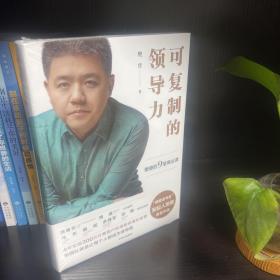



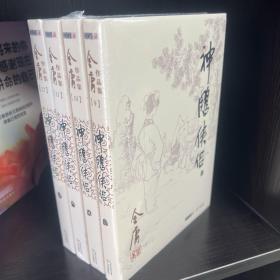



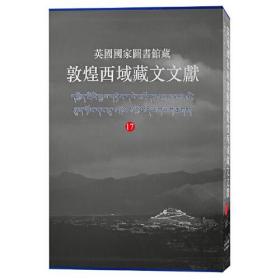
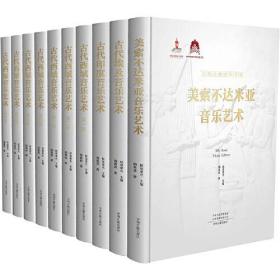



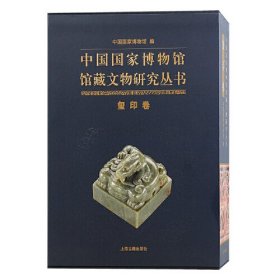
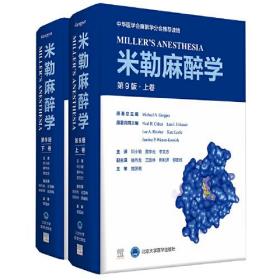

以下为对购买帮助不大的评价